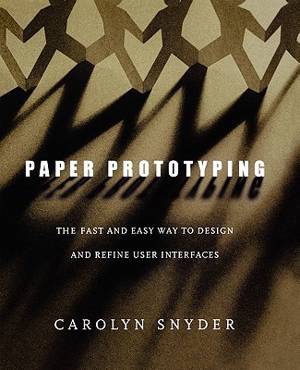
- Afhalen na 1 uur in een winkel met voorraad
- Gratis thuislevering in België vanaf € 30
- Ruim aanbod met 7 miljoen producten
- Afhalen na 1 uur in een winkel met voorraad
- Gratis thuislevering in België vanaf € 30
- Ruim aanbod met 7 miljoen producten
Zoeken
€ 51,95
+ 103 punten
Omschrijving
Do you spend a lot of time during the design process wondering what users really need? Do you hate those endless meetings where you argue how the interface should work? Have you ever developed something that later had to be completely redesigned? Paper Prototyping can help. Written by a usability engineer with a long and successful paper prototyping history, this book is a practical, how-to guide that will prepare you to create and test paper prototypes of all kinds of user interfaces. You'll see how to simulate various kinds of interface elements and interactions. You'll learn about the practical aspects of paper prototyping, such as deciding when the technique is appropriate, scheduling the activities, and handling the skepticism of others in your organization. Numerous case studies and images throughout the book show you real world examples of paper prototyping at work. Learn how to use this powerful technique to develop products that are more useful, intuitive, efficient, and pleasing: * Save time and money - solve key problems before implementation begins * Get user feedback early - use it to focus the development process * Communicate better - involve development team members from a variety of disciplines * Be more creative - experiment with many ideas before committing to one
Specificaties
Betrokkenen
- Auteur(s):
- Uitgeverij:
Inhoud
- Aantal bladzijden:
- 408
- Taal:
- Engels
- Reeks:
Eigenschappen
- Productcode (EAN):
- 9781558608702
- Verschijningsdatum:
- 2/04/2003
- Uitvoering:
- Paperback
- Formaat:
- Trade paperback (VS)
- Afmetingen:
- 187 mm x 237 mm
- Gewicht:
- 825 g

Alleen bij Standaard Boekhandel
+ 103 punten op je klantenkaart van Standaard Boekhandel
Beoordelingen
We publiceren alleen reviews die voldoen aan de voorwaarden voor reviews. Bekijk onze voorwaarden voor reviews.











